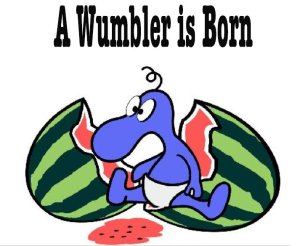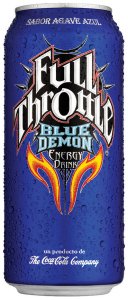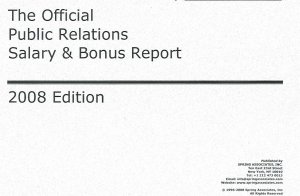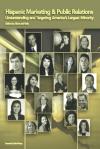Posted by Elena del Valle on July 31, 2008

Soulmates by Suzan Wolters
Art: Soulmates by Suzan Wolters
In spite of the social stigma associated with being overweight one quarter of the adult population in the United States is obese as defined by Center for Disease Control and Prevention (CDC) standards of weight. To address the issue of obesity several years ago the leadership of that organization set a goal to reduce the number of obese people to 15 percent of the adult population by 2010. That may be a lofty goal since not a single state has reached it.
Obesity exceeds 30 percent in three states, Alabama, Mississippi and Tennessee; and one quarter of states have 25 percent obesity levels. The state with the lowest obesity is Colorado and 19 percent of adults in that state are obese.
To find out the state of obesity in the country the CDC analyzed the results of a national telephone survey, the 2007 Behavioral Risk Factor Surveillance System (BRFSS), a random-digit–dialed telephone survey of the country’s civilian population 18 years of age and older by state. Among ethnic minorities 36 percent of blacks and 28.5 percent of Hispanics were obese.
College graduates, men and women, were the least likely to be obese. Men who responded to the survey and had graduated from college reported 22 percent obesity; women respondents who had graduated from college reported 17.9 percent obesity.
From a geographic perspective, residents of Southern states were most likely to be obese, 27 percent; while the Midwest region showed 26.5 percent; the Northeast region had 24.4 percent; and the West had 23.1 percent.
The CDC determines obesity using height and weigh to establish a person’s body mass index. For example, a 5 foot 9 inch adult with a weight of 203 pounds has a body mass index of 30 and is considered obese.
The mission of the CDC is “to promote health and quality of life by preventing and controlling disease, injury, and disability.”
“Happy for No Reason” audio recording

Presenter Marci Shimoff, author, Happy for No Reason
What: An audio presentation by Marci Shimoff and Q&A with Marci Shimoff and HispanicMPR.com audio program host Elena del Valle about finding happiness.
Available exclusively on HispanicMPR.com!
What you receive: Downloadable recording of a 39-minute audio presentation “Happy for No Reason” and a bonus 50-minute interview of Marci Shimoff.
Ready to buy? Select a format to add to your shopping cart:
Downloadable MP3 of Happy for No Reason $119.95
Audio CDs of Happy for No Reason $139.95
More information on “Happy for No Reason” audio recording with Marci Shimoff
Posted by Elena del Valle on July 30, 2008

Bertrum and Raimundo
Photos, video: Giddy Gander Company
In an effort to support bilingual (Spanish-English) fluency in the United States beginning with children and children’s television, the Giddy Gander Company launched a cartoon series and brand called The Wumblers in early 2007. Success soon followed. So much so that beginning July 2008, the bilingual branded program is airing on Spanish language television. Scroll down to watch a promo video about The Wumblers.
Also, The Wumblers products will be sold at Walmart through a joint promotion, between The Wumblers, the National Watermelon Association, and Walmart. The promotion was due to begin this July in one of the retail merchant’s Texas stores.
The Wumblers main characters are Bertrum, a young Wumbler, and Raimundo, a bilingual Latin American snail, who are best friends. Bertrum was created to reflect the cultural issues of the toddler children who watch the series. Raimundo is Bertrum’s conscience, mentor, and best friend, even if he is a Spanish speaking snail.
Bertrum’s other imaginary friends show up to advise and tempt him at important moments. He has two loving parents, one of which runs an ice cream shop; and an “eccentric aunt” who likes to paint and sing.

A Wumbler is Born
“The idea is to help Spanish speaking children in the United States achieve English fluency in a new and innovative way while remaining consistent with the values that remain key to the strong family ties and cultural origins of this flourishing community that offers so much to our U.S. society,” said Laura J. Wellington, creator of The Wumblers.
I really believe that it’s time for someone to look up and give Hispanic-Latino children the recognition and heroes they deserve within mainstream U.S. television (and subsequent platforms) with a thrust that warrants the continued emergence and positive contributions made by the Hispanic-Latino people to U.S. (and global) society.”
The Wumblers began as a cartoon series on television nine months ago. The success of the concept is reflected in the recent promotion with Walmart and the National Watermelon Association as well as the production of DVDs that became available for retail purchase this month.
The Wumblers, multi-colored, bulbous-shaped characters, are born from watermelons and eat food that falls from the sky. They are the creation of Wellington, a preschool teacher, mother of four, and widow. In 2006, she co-founded the Giddy Gander Company LLC to respond to requests for The Wumblers.
Find out what multicultural kids across America think
Listen to Michele Valdovinos, SVP, Phoenix Multicultural in
“Marketing to Multicultural Kids” audio recording

Michele Valdovinos gives a presentation and participates in an extended Q&A discussion about multicultural children based on a Phoenix Multicultural and Nickelodeon study of 1,300 multicultural children in 16 United States markets.
Find out about
• The Phoenix Multicultural Kids Study
• Relationship between children and their context
• Issues relating to family, technology and media, diversity, buying power, relationships in household, self perception, values, acculturation, cultural heritage, frequency of media activity, income and spending, brand preferences, the American Dream
• How many billions of dollars buying power multicultural kids children have
• Children’s spending attitudes, habits by ethnicity
• How much money a year Hispanic kids have available to spend
• Types of products Hispanic kids buy
Click here for information on “Marketing to Multicultural Kids” audio recording
Comments:
Filed Under: Video
Posted by Elena del Valle on July 29, 2008

Coca-Cola’s Full Throttle Blue Demon energy drink
Photo: The Coca-Cola Company
Hispanics represent 27 percent of the total energy drink volume consumed in the United States. In late 2006, recognizing a desirable market when they saw it, marketers at The Coca-Cola Company decided to target blue collar Latino men 20 to 30 years of age with a new energy drink. For inspiration they relied on the Blue Demon, a Mexican luchador (wrestler) and movie star. In almost two years, Full Throttle Blue Demon, has nearly doubled in volume from the company executives’ original projections.
According to company representatives, Full Throttle Blue Demon has become the key growth product for the Full Throttle product line. In addition, Blue Demon has helped the Full Throttle trademark create a connection with young Hispanic men, a segment the company considers a key target audience.
Full Throttle Blue Demon is available in stores nationwide in Blue Agave flavor in 16 and 24-ounce cans. It contains caffeine, ginseng extract, Taurine, Guarana extract and B vitamins.
“Best in Class Hispanic Strategies” audio recording


Presenters Carlos Santiago and Derene Allen
-
Find out what makes 25 percent of the top 500 Hispanic market advertisers out perform the remaining companies
-
Discover what questions to ask, steps to take to be a Best in Class company
Click here for more about “Best in Class Hispanic Strategies” audio recording
In order to connect with Latino consumers it’s important to make specialty products readily in Hispanic oriented retail stores, according to Reinaldo Padua, assistant vice president of Hispanic Marketing, Coca-Cola North America, who discussed the company’s marketing strategies by phone.
It’s also important for the message to connect with the target audience and to understand that the reality of United States Hispanics is different from other market segments in the country.Since the launch of Full Throttle Blue Demon Coca-Cola marketers have promoted the drink via a national Spanish and English-language advertising campaign, in-store sampling and merchandising, public relations programs and a mobile promotional tour.

Full Throttle Coffee
Coca-Cola recently announced another product in the Full Throttle line, Full Throttle Coffee, a coffee and energy blend. The new beverage, which may appeal to the same demographic as the Blue demon, will first become available in the U.S. Pacific Northwest and Southeast regions before rolling out nationally in August 2008.
Executives hope to make further inroads among young men seeking an energy boost with the new energy coffee drink. The beverage is made with 100 percent premium Colombian Arabica coffee and the Full Throttle energy and vitamin blend. It will be available in 15-ounce aluminum cans.
“Guys are increasingly looking for great-tasting beverage options that will give them the extra ‘kick’ they need to conquer their day,” said Rafael Acevedo, senior brand manager, Energy Drinks, Coca-Cola North America. “Full Throttle Coffee combines the smooth, rich taste of coffee with the intensity that you can only get from a Full Throttle Energy Drink.”
Full Throttle Blue Demon and Full Throttle Coffee are part of the Full Throttle line which combines tropical citrus flavor in an energy drink. According to the company website, Coca-Cola produces 450 brands and 2,800 beverages. Consumers drink 1.5 billion servings of its products per day.
Make your ads resonate with Hispanics
Listen to C&R’s Research Director Liria Barbosa in
“Hispanics’ Perspective on Advertising” audio recording

Liria Barbosa gives a presentation and participates in an extended Q&A discussion about
• Type of ads Latinos prefer
• Latino top media choices
• Percent of Latinos who tried products because of ads
• Percent of Latinos who purchased products because of ads
• What makes an ad “Hispanic”
• If ad language is important for bicultural Latinos
• What to keep in mind when targeting bicultural Latinos with ads
Click here for information on Hispanic Perspectives on Advertising
Posted by Elena del Valle on July 28, 2008

Mark Potok, director, Intelligence Report of SPLC
Photo: Mark Potok
A podcast interview with Mark Potok, director, Intelligence Report, Southern Poverty Law Center is available in the Podcast Section of Hispanic Marketing & Public Relations, HispanicMPR.com. During the podcast, he discusses anti Latino hate groups with Elena del Valle, host of the HispanicMPR.com podcast.
As editor of the Southern Poverty Law Center’s Intelligence Report magazine, Mark leads an operation that monitors the extreme right in the world today. In addition to editing the magazine, Mark acts as a spokesman for the SPLC, a well-known civil rights organization based in Alabama. He has testified before the Senate and the United Nations High Commission on Human Rights.
Before joining the Southern Poverty Law Center in 1997, Mark spent almost 20 years as a reporter at newspapers including USA Today, the Dallas Times Herald and The Miami Herald. While at USA Today, he covered the 1993 siege in Waco, the rise of militias, the 1995 Oklahoma City bombing and the trial of Timothy McVeigh.
Find out which Latino markets are booming with
“The Next Step: Secondary Latino Markets” audio recording

Presenter Dora O. Tovar, MPA
Click here for information on Secondary Latino Markets
In 1996, his editors nominated him for a Pulitzer Prize for a package of stories on racism in Texas public housing. The Intelligence Report he edits recently received the 2007 Investigative Award part of the Utne Independent Press Awards.
To listen to the interview, scroll down until you see “Podcast” on the right hand side, then select “HMPR Mark Potok,” click on the play button below or download the MP3 file to your iPod or MP3 player to listen on the go, in your car or at home. To download it, click on the arrow of the recording you wish to copy and save it to disk. The podcast will remain listed in the July 2008 section of the podcast archive.
Make your ads resonate with Hispanics
Listen to C&R’s Research Director Liria Barbosa in
“Hispanics’ Perspective on Advertising” audio recording

Liria Barbosa gives a presentation and participates in an extended Q&A discussion about
• Type of ads Latinos prefer
• Latino top media choices
• Percent of Latinos who tried products because of ads
• Percent of Latinos who purchased products because of ads
• What makes an ad “Hispanic”
• If ad language is important for bicultural Latinos
• What to keep in mind when targeting bicultural Latinos with ads
Click here for information on Hispanic Perspectives on Advertising
Posted by Elena del Valle on July 25, 2008

The 2008 Official Public Relations Salary & Bonus Report
Public relations and human resources executives are the target audience for The Official Public Relations Salary & Bonus Report 2008 Edition, a 13-page spiral bound summary of public relations salaries and bonuses across the country. The report, published since 1996 by New York City based Spring Associates, Inc., sells for $399.
The report is compiled and analyzed from the Spring Associates private database of 20,000 credentialed individuals who work in public relations. According to promotional materials, random survey methods of data gathering are not used. Representatives from the company collate the data on a daily basis during direct communications with public relations executives.
The 2008 report indicates average corporate communications base salaries went up 3.8 percent and public relations agency salaries increased 3.9 percent. The report outlines eight cities with the greatest number of public relations practitioners: New York, Atlanta, Chicago, Los Angeles, Boston, Dallas, Washington, D.C., and San Francisco. Salaries in these cities combined increased 4.2 percent for agencies and 4 percent for corporate communications departments.
Over the past years, Spring Associates analysts have concluded that once salaries and other benefits are taken into account public relations practitioners in corporate America are better compensated than their agency counterparts.
Spring Associates is a 28 year old executive search company founded by Dennis Spring. Its staff assist companies seeking to hire professionals in public affairs, consumer marketing, investor relations, corporate communications, marketing communications, speech writing, employee communications, financial communications, media relations, medical/health care, and hi-tech (dot com, e-commerce, e-retail).
“Happy for No Reason” audio recording

Presenter Marci Shimoff, author, Happy for No Reason 7 Steps to Being Happy from the Inside Out (Free Press, $24.95) and president Esteem Group
What: An audio presentation by Marci Shimoff and Q&A with Marci Shimoff and HispanicMPR.com audio program host Elena del Valle about using your energy to attract clients and customers.
“Happy for No Reason” audio recording consists of 89 minutes of useful insights and information by the internationally famous author and speaker.
Available exclusively on HispanicMPR.com! For your convenience you may also purchase these materials on audio CD’s.
What you receive: Downloadable recording of a 39-minute audio presentation “Happy for No Reason” and a bonus 50-minute interview of Marci Shimoff.
Ready to buy? Select a format to add to your shopping cart:
Downloadable MP3 of Happy for No Reason $119.95
Audio CDs of Happy for No Reason $139.95
More information on “Happy for No Reason” audio recording with Marci Shimoff
Posted by Elena del Valle on July 24, 2008

Photo: PublicDomainPictures.net/Mark Coldren
According to a recently released report from the Tomás Rivera Policy Institute (TRPI) and the Asian Pacific American Legal Center (APALC), people with limited English abilities and immigrants are less prepared for disasters than other segments of the population. These group are sometimes excluded from educational efforts and emergency response plans.
To prepare the report, “Disaster Preparedness in Urban Immigrant Communities: Lessons Learned from Recent Catastrophic Events and Their Relevance to Latino and Asian Communities in Southern California,” the researchers observed Latino and Asian immigrant communities in Southern California for disaster education and response preparation plans. The long term goal of the study is to improve disaster awareness among immigrant community members, and assist emergency personnel to improve the service they provide to limited English speaking populations.
The researchers found: it was difficult to locate disaster preparedness materials in languages other than English; insufficient bilingual staff and volunteers among emergency response personnel and organizations who provide assistance during emergencies; although there are plenty of ethnic media outlets that could facilitate emergency preparedness and educational efforts, they are not being used widely; and there is concern that immigrants may refrain from requesting assistance in an emergency for fear of revealing their illegal immigration status.
The researchers recommend in the report that federal and state governments establish basic secondary language resources; and that local agencies create informational materials and response plans to meet the language needs of the communities they serve.
The Tomás Rivera Policy Institute is one of the premier policy institutes that seeks to advance insightful thinking on key issues affecting Latino communities. The Institute is an independent, nonprofit organization that is an affiliated research unit of the School of Policy, Planning, and Development at the University of Southern California.
Founded in 1983, the Asian Pacific American Legal Center is a nonprofit organization dedicated to advocating for civil rights, providing legal services and education, and building coalitions to positively influence and impact Asian Pacific Americans and to create a more equitable and harmonious society. APALC is affiliated with the Asian American Justice Center (formerly NAPALC) in Washington, D.C.
Target Latinos effectively by anticipating changes in the market with
“Hispanic Projections with 2007-08 update” audio recording

Presenter Roger Selbert, Ph.D.
Find out
- About Latino buying power growth in the future
- How Latino market growth compares with other markets in the U.S.
- What drives the rise of Latino economic clout
- Who should target the Latino market
- What is the size of the Hispanic affluent market
- If the luxury Latino market is growing
Stay ahead of your competition with “Hispanic Projections”
Posted by Elena del Valle on July 23, 2008

Photos: Public Domain Pictures/Anna Cervova, Braille Institute, RL Public Relations
According to a Greenfield Online/Mintel April 2008 report, ethnicity affects the type of glasses survey respondents wear. Of those surveyed half of whites, blacks and Hispanics use bifocals while most Asians use regular glasses. These findings can be explained in part by the higher average age of whites and blacks.
It is also related to differences in household income: According to the U.S. Census Bureau, the average household income for Asians is $64,000 but only $48,000 for the average United States citizen. The higher income makes other vision correction options available and more likely for Asians like contacts and vision correction surgery.
The Mintel study also indicates more black and Hispanic consumers use colored or tinted contacts compared to other ethnic groups. These individuals are more likely to take advantage of colored contacts as a fashion accessory offering them hazel, blue or green eye colors. At the same time, Asian and Hispanics respondents expressed greater interest in corrective surgery.
“Segmentation by Level of Acculturation” audio recording

Presenter Miguel Gomez Winebrenner
Discusses
- Assimilation versus acculturation
- Factors that affect Latino acculturation
- How to know if someone is acculturated
- Number of years necessary for acculturation
- Effects of immigration debate on acculturation
- Three main ways of segmenting Latinos
Click here for details about “Segmentation by Level of Acculturation”
As Latinos age the rate of vision loss among adults over 40 increases. Many vision loss diseases prevalent among Hispanics, like glaucoma and diabetic retinopathy, can lead to blindness if left untreated. At the same time 41 percent of Hispanics in Los Angeles have very little knowledge about vision health or vision-loss diseases, according to a Survey of Public Knowledge, Attitudes, and Practices (KAP) Related to Eye Health and Disease conducted by the National Eye Institute in 2002.
Looking at the number of individuals in the communities it serves, the Braille Institute, a California non profit organization, realized it was necessary to focus closely on under served groups who need assistance and may not be aware it’s available. The organization has plans to reach out to Spanish speaking elderly Latinos in the Los Angeles metro area to draw their attention to issues of eye health care and vision loss prevention. To accomplish this goal the organization hired an independent agency, RL Public Relations (RLPR).

How someone with an eye illness might see an eye chart
“El Poder Sin Ver is a program Braille Institute created to specifically target the need for low vision services in the Latino community. We are planning a monumental community outreach effort to spread the word about our free services, all of which help people learn how to live a fulfilling life, even if their vision isn’t as good as it used to be,” said Courtney Goines, media relations manager, Braille Institute of America, Inc.
Difficulties with communication, lack of insurance, low income and cultural differences in health behaviors make the Hispanic population especially vulnerable to poor access to vision care. With the help of RLPR the institute hopes to increase awareness about the high incidence of vision loss among Hispanics in the Southern California community, and educating Hispanic elders about ways they can prevent and treat eye disease.

Roxana Lissa, CEO and founder, RL Public Relations
“We believe in spearheading public relations campaigns for socially-responsible organizations, especially if the good intention is geared towards the Hispanic community,” said Roxana Lissa, chief executive officer and founder of RLPR
The Braille Institute campaign will target Spanish-dominant Latino seniors (the group most affected by vision loss) in Los Angeles as well as those who influence their decisions, adult children, relatives and health care providers. The account will be led by Yanka Burgos, vice president out of the company’s Los Angeles office.
The agency plans to conduct a media outreach initiative focusing on outlets that reach Hispanic seniors in Los Angeles and those who influence them. As part of the campaign’s grassroots efforts agency representatives plan to reach out to community based organizations to promote Braille Institute services and provide information about eye health care in Spanish.
Braille Institute services are free and many of their counselors are already bilingual; some classes are provided in English and Spanish. The mission of the Braille Institute is to eliminate blindness and severe sight loss as a barrier to a fulfilling life.
Founded in the United Kingdom 35 years ago, Mintel is a supplier of consumer, media and market research. The company, with offices in Chicago, London, Belfast, Sydney and Shanghai, has been studying the United States Hispanic market since 2003.
Hispanic Marketing and Public Relations Understanding and Targeting America’s Largest Minority book

“A must resource for practitioners/professionals expecting to reach US Hispanics; also valuable for college programs in marketing, public relations and communications. Highly recommended.”
Choice magazine
Click here for information on the Hispanic Marketing & Public Relations books
Posted by Elena del Valle on July 22, 2008
Information provided by our Event Partner

September 9, 2008
Moscone West
San Francisco, CA
Exploring New Technologies, New Products and New Business Models!
Mobile Entertainment Live!, powered by Billboard, The Hollywood Reporter, Nielsen Mobile and AdweekMedia, will offer a new event format this fall that is designed to deconstruct the typical conference experience and give a greater voice to all attendees.
New technologies, new products and new business models will be the topics of the day, so Mobile Entertainment Live! regulars and newcomers alike are sure to find something innovative and exciting at this event!
This one-day conference will feature main-stage keynote interviews with industry experts as well as a full afternoon program dedicated to in-depth tracks on each of the major content areas. Each track will include a series of product demonstrations, presentations, interviews, feedback sessions and structured networking opportunities. The program will be staggered in such a way that attendees can take advantage of multiple tracks.
Music
Deep-dive sessions on the future of music content on mobile phones including ringtones, ringback tones, full-song downloads, sideloading, bundling, artist participation, promotional opportunities and mobile ticketing.
Video
Focused sessions on all mobile video-related content including on-demand video, streaming TV, original content vs. repurposed content, film, TV, animation and news.
Advertising
An examination of the various ways that mobile entertainment is drawing advertisers to mobile content through consumer acceptance, subsidized content, marketing programs as content services and more.
Community
A look into the highly anticipated world of mobile social networking and user-generated content including strategies/technologies for mobilizing social networks, content recommendation/sharing/gifting, mobile-only social networks, monetizing user-generated content, participation TV/events and blogging.
Contact Brittany.davies@nielsen.com for a Special Hispanic MPR Discounted Rate.
Posted by Elena del Valle on July 22, 2008

MasterCard released a Spanish language wrestler ad
Photos, video: MasterCard
MasterCard executives hope to entice cash oriented Spanish speaking Latino wrestling fans to the benefits of credit card use with Luchador, a humorous multi-platform ad campaign scheduled to air on Univision, Telemundo and Telefutura in 11 markets with large Hispanic populations. Scroll down to watch the MasterCard Luchador ad.
The Spanish language ad campaign began July 2008 with a 30-second Priceless television execution of Luchador (Spanish for fighter). In late July, the company plans to place the ads on the radio and online. Radio stations where the ad will run include KSCA FM 101.9 in Los Angeles; WCAA FM 105.9 in New York; WAMR FM 107.5 in Miami, Florida; KSOL FM 98.9 in San Francisco; WOJO FM 105.1 in Chicago; KLTN FM 102.9 in Houston; KROM FM 92.9 FM in San Antonio; and KESS FM 107.9 FM in Dallas.
Online it will appear on Univision, Batanga and AOL Latino. A revamped website and grassroots events in selected markets were launched in conjunction with the campaign.
“Best in Class Hispanic Strategies” audio recording


Presenters Carlos Santiago and Derene Allen
-
Find out what makes 25 percent of the top 500 Hispanic market advertisers out perform the remaining companies
-
Discover what questions to ask, steps to take to be a Best in Class company
Click here for more about “Best in Class Hispanic Strategies” audio recording
Luchador follows a Mexican Lucha Libre wrestler as he undergoes beauty treatments to keep his style current and pays with a MasterCard. Luchador ads will run in Phoenix, Arizona; Los Angeles, Sacramento and San Francisco, California; Chicago, Illinois; Miami, Florida; New York, New York; and Dallas, Harlingen, Houston, and San Antonio, Texas.

Chris Jogis, vice president, US Brand Development, MasterCard Worldwide
“Hispanics comprise the fastest growing population in the U.S. and as a brand it is important for us to develop a genuine connection with them,” said Chris Jogis, vice president, US Brand Development, MasterCard Worldwide. “According to MasterCard research, 75 percent of Hispanics say that cash is their preferred method of payment. We would like to provide Hispanics with information on the benefits of credit and debit MasterCard for their everyday purchases, from convenience and earning rewards to building credit scores and record keeping.”
The creative development of the MasterCard Priceless campaign was handled by Joyce King Thomas, executive vice president and chief creative officer; Tim Dillingham, senior vice president and creative director; Mark Gonzalez, creative director; and Greg Lotus, senior vice president and executive producer of McCann Erickson in New York. The TV spot was produced in California by Supply & Demand production house.
The MasterCard mission is “to create more advanced methods of payment that fuel economic connections and drive real business value.”
Make your ads resonate with Hispanics
Listen to C&R’s Research Director Liria Barbosa in
“Hispanics’ Perspective on Advertising” audio recording

Liria Barbosa gives a presentation and participates in an extended Q&A discussion about
• Type of ads Latinos prefer
• Latino top media choices
• Percent of Latinos who tried products because of ads
• Percent of Latinos who purchased products because of ads
• What makes an ad “Hispanic”
• If ad language is important for bicultural Latinos
• What to keep in mind when targeting bicultural Latinos with ads
Click here for information on Hispanic Perspectives on Advertising
Comments:
Filed Under: Video
Posted by Elena del Valle on July 21, 2008

Voto Latino benefit album cover
Photos: Nacional Records
In an effort to inspire Latinos to vote National Records collected a previously unreleased track by Pitbull and Kurse and 14 songs by Don Omar, Aterciopelados, Aventura, David Garza and Ozomatli into Voto Latino, a benefit album. Proceeds of the album will benefit Voto Latino, a non partisan organization. Scroll down to listen to Across the Waters by Pitbull and Kurse from the Voto Latino benefit album.
The 15-track Voto Latino album was released on iTunes earlier this year and has been selling steadily for $3.99. In the previously unreleased track Across The Waters Miami-based hip-hop artist Pitbull and Kurse sing about the plight of Cuban immigrants.
“To me it’s great to have a record like Across the Waters involved with Voto Latino iTunes because it represents everything we stand for, which is the struggle for freedom and opportunity,” said Pitbull.
“Music is the soundtrack to my life. The Voto Latino compilation is the soundtrack of a movement,” said Rosario Dawson, co-founder, Voto Latino, who recently starred in a telenovela parody public service announcement with Wilmer Valderrama.

Aterciopelados
“It encapsulates everything about the Latino drive to the polls so blast it on your way to change,” said Valderrama. “Music has proven to be an influential platform for our generation. This is the time to use it.”
Find out what multicultural kids across America think
Listen to Michele Valdovinos, SVP, Phoenix Multicultural in
“Marketing to Multicultural Kids” audio recording

Michele Valdovinos gives a presentation and participates in an extended Q&A discussion about multicultural children based on a Phoenix Multicultural and Nickelodeon study of 1,300 multicultural children in 16 United States markets.
Find out about
• The Phoenix Multicultural Kids Study
• Relationship between children and their context
• Issues relating to family, technology and media, diversity, buying power, relationships in household, self perception, values, acculturation, cultural heritage, frequency of media activity, income and spending, brand preferences, the American Dream
• How many billions of dollars buying power multicultural kids children have
• Children’s spending attitudes, habits by ethnicity
• How much money a year Hispanic kids have available to spend
• Types of products Hispanic kids buy
Click here for information on “Marketing to Multicultural Kids” audio recording
The album artists and titles are: Notch, Aquí Me Quedo; Pitbull & Kurse, Across The Waters; Ozomatli, (Who Discovered) America?; Don Omar, Angelito; Los Amigos Invisibles, All Day Today; Salvador Santana Band, My One True Love; Ceu, Roda (Bombay Dub Orchestra’s Grateful Dub Mix); Aterciopelados, Cancion Protesta; Aventura, Mi Corazoncito; Chingo Bling, They Can’t Deport Us All; Ceci Bastida – Empieza A Amanecer; David Garza, There Go The Weirdos; Volumen Cero, El Mar; B-Side Players, Nuestras Demandas; Hip Hop Hoodíos, Viva La Guantanamera.
According to promotional materials, Nacional Records and iTunes are donating their proceeds from the benefit album. All proceeds will benefit Voto Latino’s voter registration, education and empowerment initiatives.
Founded in 2004, Voto Latino is a non-partisan organization that works to promote an enfranchised America by leveraging celebrity voices, the latest technology and youth themselves to promote positive change and voter empowerment throughout the Latino community. Voto Latino is targeting seven million American Latino voters aged 18-29, 18 percent of the youth vote, in preparation for the 2008 general elections.
Click on the play button to listen to Across the Waters by Pitbull and Kurse from the Voto Latino benefit album



































